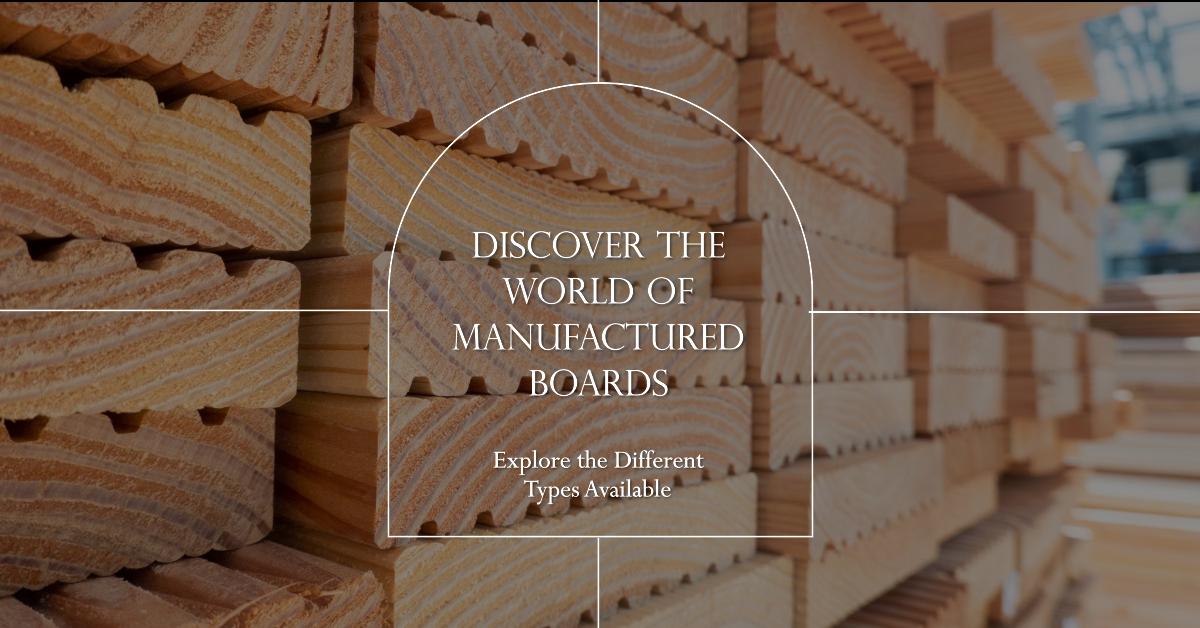Manufactured boards have redefined the landscape of woodworking and construction, offering a blend of versatility, sustainability, and cost-effectiveness. These engineered wood products have become integral components in many projects, providing solutions for diverse applications. In this comprehensive guide, we delve into the extensive types of manufactured boards, examining their unique characteristics, applications, and benefits.
Different Types of Manufactured Board

Let us now understand and explore varieties of manufactured boards along with their properties, characteristics, and practical uses.
1. Medium Density Fiberboard (MDF)
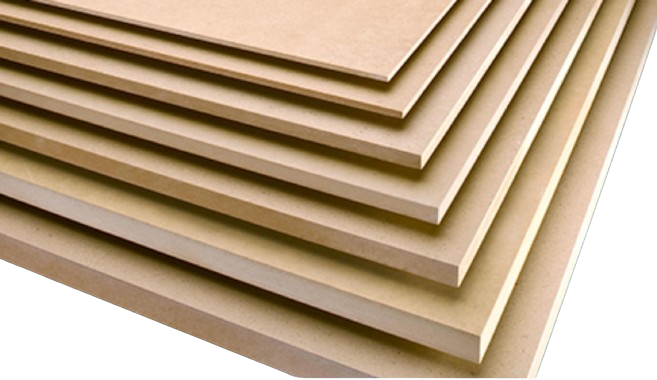
MDF, or Medium Density Fiberboard is a processed board made by compressing wood fibers and resin under high pressure and heat. This process creates a dense, uniform board with a smooth surface, free from knots or grain patterns commonly found in natural solid wood. MDF is commonly used in furniture manufacturing, cabinetry, shelving, and molding due to its affordability, stability, & ease of machining. It can be cut, drilled, and shaped easily, making it a versatile option for interior applications. Additionally, MDF is often used as a substrate for veneers or laminates to create decorative surfaces with various finishes and designs.
2. Low-Density Fiberboard (LDF)
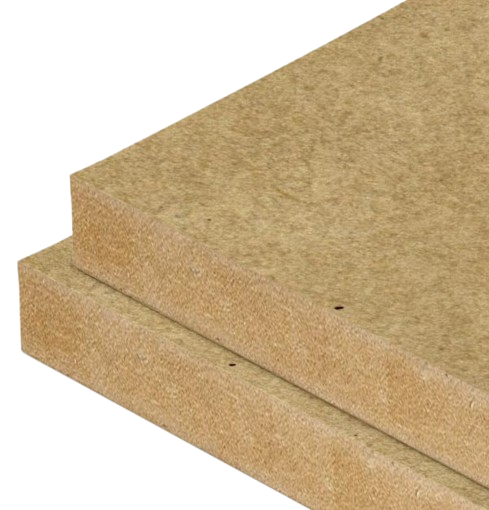
Low-density fiberboard, or LDF, is characterized by its lower density compared to MDF, making it lighter and more flexible. While not as sturdy as MDF, LDF is suitable for applications where weight and flexibility are prioritized over strength. It is commonly used in furniture backs, decorative paneling, and acoustic insulation.
3. High-Density Fiberboard (HDF)
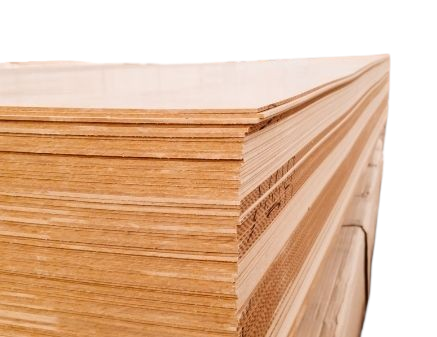
High-density fiberboard, or HDF, is typically made from hardwood fibers by applying extreme pressure to produce a dense, durable panel. HDF boasts exceptional strength and durability, making it suitable for applications requiring a robust material, such as flooring, furniture components, and decorative wall panels. Its smooth, uniform surface allows for precision machining & finishing. In terms of cost, HDF is generally more expensive than MDF due to its higher density and strength. However, it is still more affordable than solid wood alternatives.
4. Particleboard
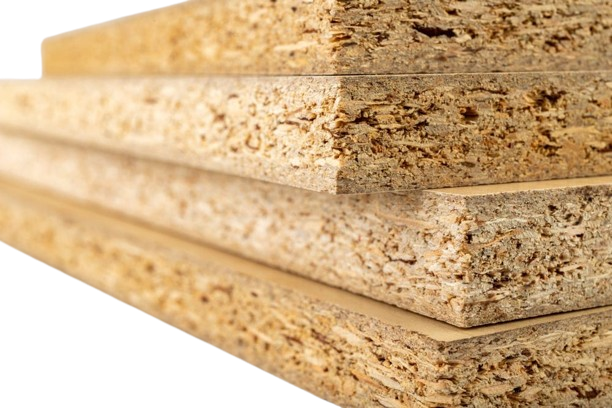
Particleboard, also known as chipboard, is a budget-friendly building material crafted from a mix of lumber remains like wood shavings, chips, & sawdust, all bonded together with resin. Its affordability and versatility make it a go-to choice for various projects, from flooring underlayment to furniture and speaker boxes. However, its cost-effectiveness comes with limitations—it’s best used as support rather than a structural component in roofing or flooring.
5. Plywood
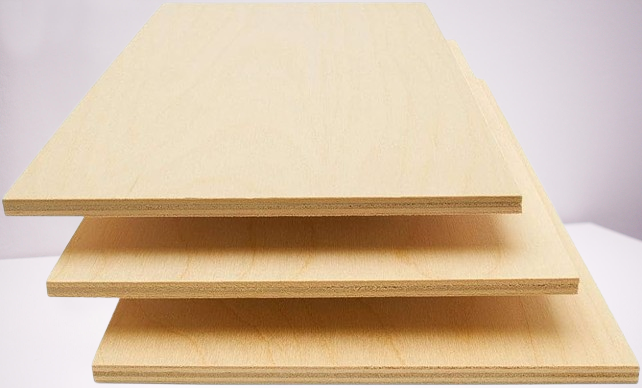
Plywood is made by layering thin sheets of wood veneer, called plies or layers, with each layer positioned at right angles to the adjacent ones. This cross-grain construction gives plywood exceptional strength, stability, and resistance to warping and splitting.
Plywood comes in various grades, ranging from structural grades suitable for framing and sheathing in construction to decorative grades used in furniture and cabinetry. Its widespread use in various industries highlights its importance as a fundamental building material in modern society.
6. Oriented Strand Board (OSB)
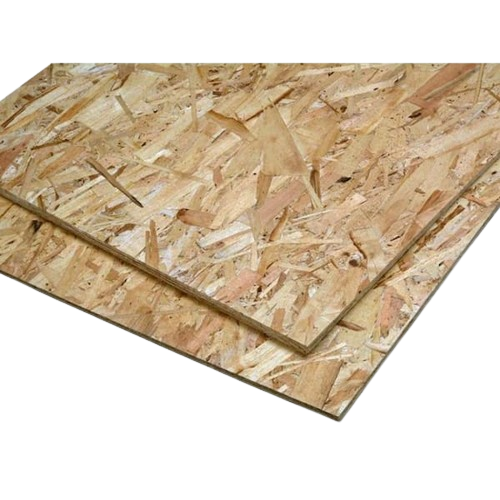
Oriented Strand Board comprises wood strands bonded together with adhesive under heat and pressure. The strands, are typically obtained from fast-growing species of wood and are aligned in specific orientations to maximize strength & stability. OSB is known for its uniformity, durability, and cost-effectiveness, making it a popular choice for various construction applications.
7. Veneer
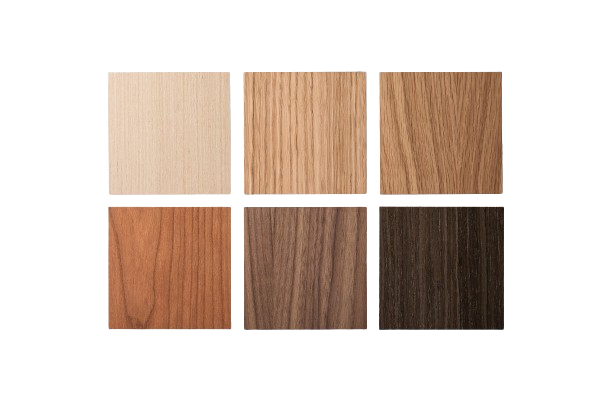
Veneer is a thin layer of wood sliced or peeled from a log, typically less than 3 mm in thickness. These slices are carefully selected for their grain pattern, color, and texture to achieve the desired aesthetic. The sheets are often backed with a substrate material such as plywood, MDF (medium-density fiberboard), or particleboard to enhance stability and prevent warping or cracking.
Overall, veneer serves as a versatile and cost-effective alternative to solid wood, making it a popular choice for both residential and commercial applications.
8. Blockboard
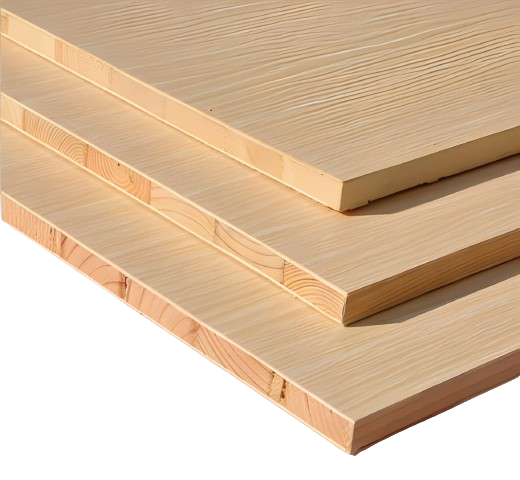
A blockboard is composed of a core made from strips or blocks of solid wood, usually softwood species such as pine or fir. These wood strips are glued together to form a sturdy core. The core is then sandwiched between veneer layers, typically thin hardwood layers such as oak, birch, or mahogany.
Depending on the intended application, the blockboard panels are available in various thicknesses, ranging from around 12mm to 50mm or more. While blockboard may be slightly more expensive than other engineered wood products such as plywood or particleboard, it offers excellent value for its strength, stability, and versatility.
9. Hardboard
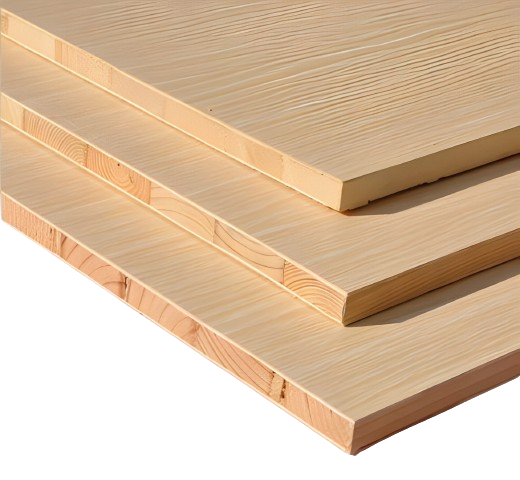
Hardboard is made up of wood fibers combined with resins and wax which is then subjected to high temperature and pressure to create a dense and uniform board. It is renowned for its high density, which gives it strength, durability, & resistance to warping or bending. It is denser than standard fiberboard or particleboard, making it suitable for various applications.
One side of a hardboard typically has a smooth, uniform surface, while the other may be textured or rough. This smooth surface makes it ideal for painting, laminating, or applying veneers, while the textured side may offer better adhesion.
10. Insulation Board
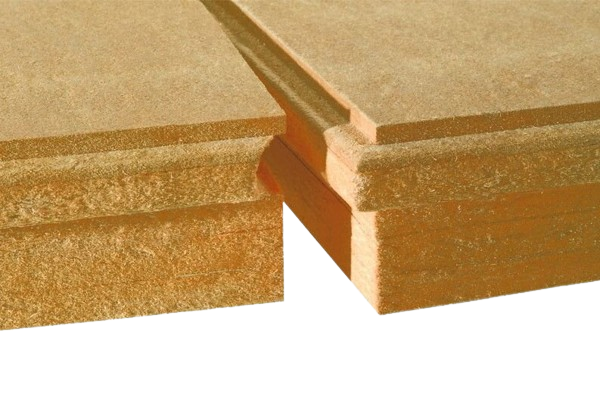
Insulation wood board, also known as wood fiber insulation board is usually derived from sustainable sources like recycled wood or sawmill residues. As the name suggests the primary material used in insulation wood boards is wood fibers. These fibers are usually compressed and formed into dense boards.
The boards are excellent at trapping heat and preventing its transfer through walls, roofs, and floors. Also, these boards are widely popular because of their environmental friendliness. The cost of insulation wood boards can vary depending on various factors such as thickness, density, & brand. However, they are still reasonably priced in comparison to other insulation materials.
Choosing The Best Manufactured Boards For Your Project
When deciding on the best-manufactured boards, there are a few key factors to consider.
Firstly, think about the specific requirements of your project, such as the intended use, the desired appearance, and the level of durability needed. For example, if you’re building furniture or cabinetry, you might opt for plywood or medium-density fiberboard (MDF) for its versatility and smooth finish. On the other hand, if you’re constructing structural elements like walls or floors, oriented strand board (OSB) or plywood might be more suitable due to their strength and stability.
Next, consider your budget and the cost-effectiveness of the different options. While plywood is often considered a higher-end choice, it may be a worthwhile investment for projects where quality & longevity are important. However, if you have a tight budget, alternatives like particleboard or chipboard can offer a more affordable solution.
Finally, weigh the practical considerations such as ease of installation, availability of the material, and any environmental concerns. Some manufactured boards, like plywood and OSB, are relatively easy to work with and readily available. Others, like reclaimed wood or specialty veneers, may require more effort to source but offer unique aesthetic qualities & sustainability benefits.
By carefully weighing these factors and selecting the manufactured boards that best meet your project’s needs, you can ensure a successful outcome while staying within budget and achieving the desired look and functionality.

